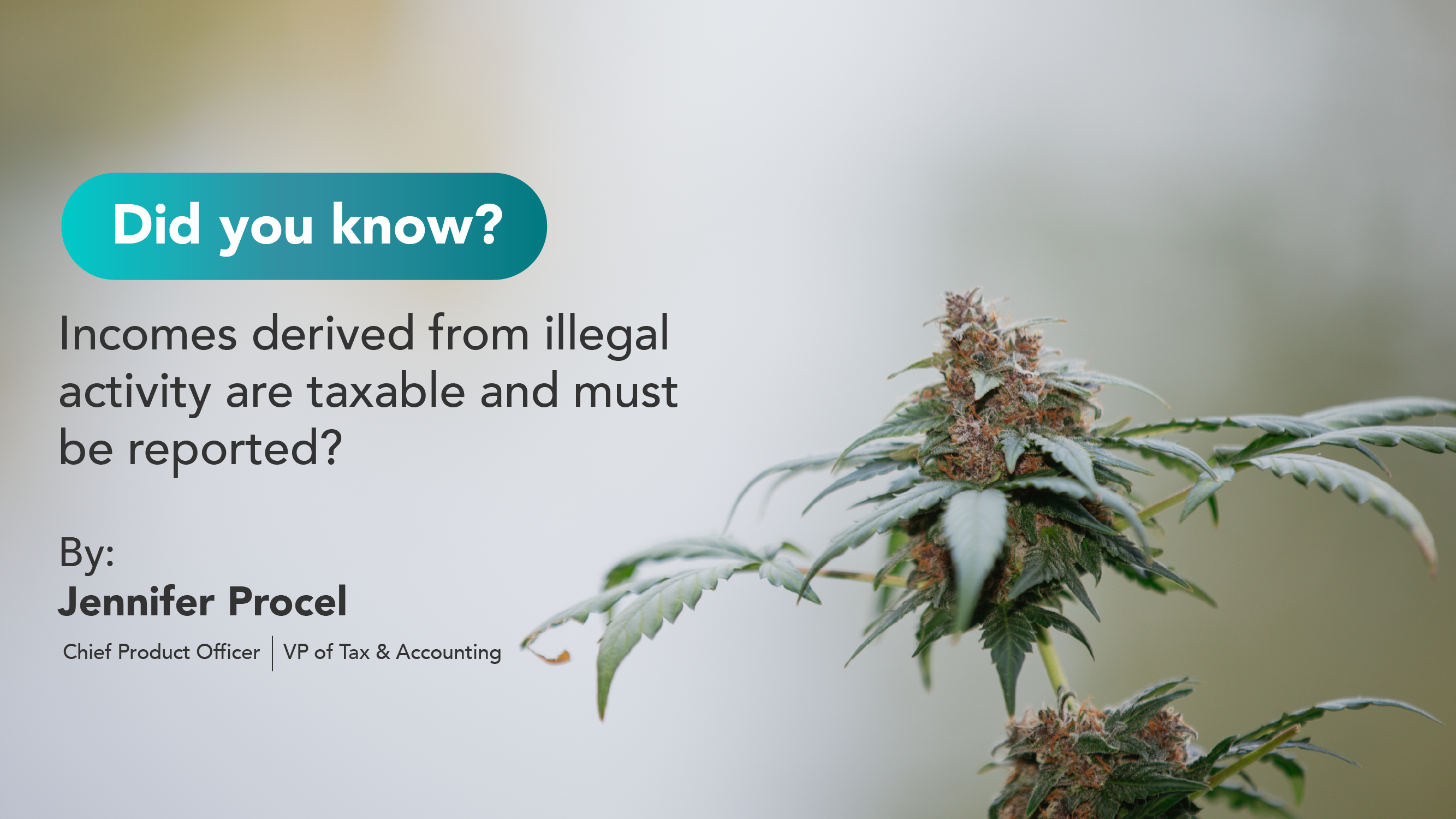Did you know that income that derives from illegal activity is still taxable and required to be reported?
If you are a car thief, I feel safe in assuming that you are not all that concerned about the trouble you will be in for not reporting any profits received from lifting cars. But what if you are in a business that is legal in your state but remains illegal at the federal level; specifically the cannabis industry?
The U.S. cannabis industry is a multi-billion dollar industry and continues to grow, expecting to reach $32 billion in 2022. Wall Street projects this industry to be worth $100 billion by 2030! If you are in this booming business, it is vital that you understand the tax rules, deduction restrictions, and plan for optimal tax-saving strategies.
As long as marijuana remains illegal at the federal level, expense deductions are not allowed on your federal tax return. Deductions allow business owners to reduce business profits by business expenses, which reduces the total tax bill. Many things can be done to optimize tax savings with the use of deductions if your business is not considered an illegal activity. Where does that leave the thousands of marijuana entrepreneurs in the U.S.? Don’t despair. You still have tax-saving opportunities.
Although you cannot deduct business expenses, you are still allowed to reduce your gross profits by your cost of goods sold (COGS). This is very important, so please read this carefully! You may only consider COGS if you use the accrual method of accounting. If you run on a cash basis, then you will not be able to reduce your gross profits. If you are unsure, check with your accountant.
The COGS that can be considered depend on whether you are a grower or a retailer. Many businesses do both, and that is fine. You need to be sure that you are keeping great records and allocate product, labor, direct expenses, and indirect expenses between the growing portion of the business and the retail. Where COGS for production includes material, labor, and indirect production costs, COGS for retail only includes cost for transportation and the cost to acquire the goods. If you have an employee that works in both production and retail, you would need to be sure to allocate their time – production labor can be included in COGS and retail labor cannot.
This can be very confusing, especially when you start to take into account state tax laws. That is why it is very important to partner with someone who has the tax and accounting knowledge to help you with your financial reporting. At IOOGO, we provide knowledge and support in both tax and accounting!




